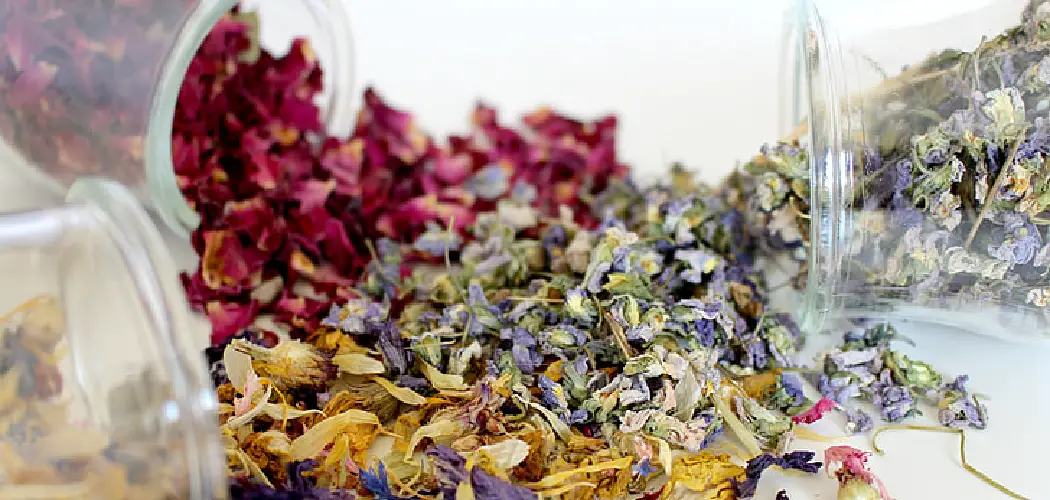If you’re looking for a simple and homemade way to bring a little bit of nature inside, why not try your hand at drying flowers to create your own beautiful potpourri?
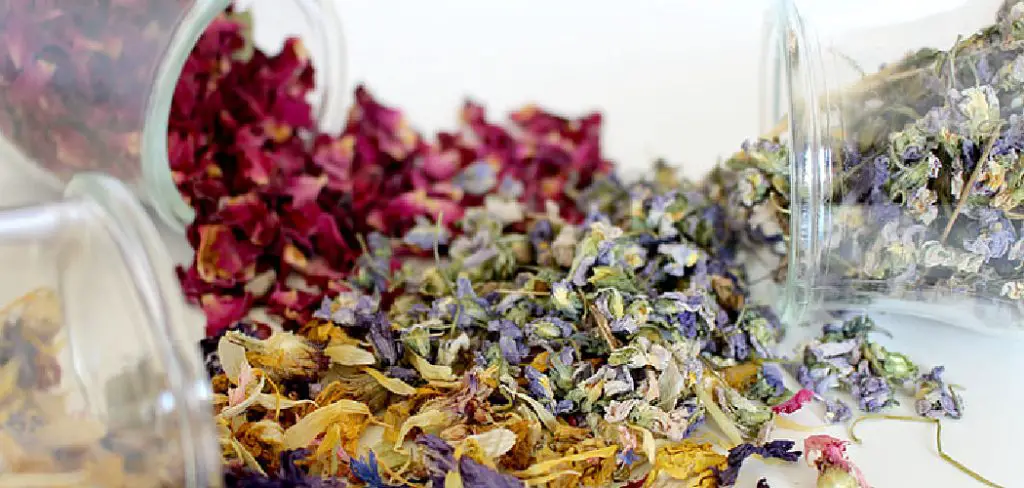
From unique wildflower bouquets to delicate rose petals, making a fragrant sachet out of plants that you’ve grown or gathered yourself is an incredibly rewarding experience.
Not only will it fill the home with a lovely scent but also offer fond memories whenever its fragrance drifts by. Read on for our easy-to-follow instructions on how to dry flowers for potpourri!
9 Best Ways on How to Dry Flowers for Potpourri
1. Air Drying:
Air drying is one of the simplest ways to preserve flowers for potpourri. Gather a small bouquet of flowers and tie them together with twine, then hang them upside down in a warm, dry, and dark place. Make sure they are not crowded and leave enough space between each flower to allow air circulation. It can take up to two weeks for flowers to dry completely using this method.
2. Use a Dehydrator:
Another easy way to dry flowers is by using a dehydrator. Set the temperature to around 95°F and place the flowers on the trays. Make sure they are not touching each other for proper air circulation. It usually takes about two hours for flowers to dry fully in a dehydrator. Using this method, you can dry flowers of different sizes and shapes together.
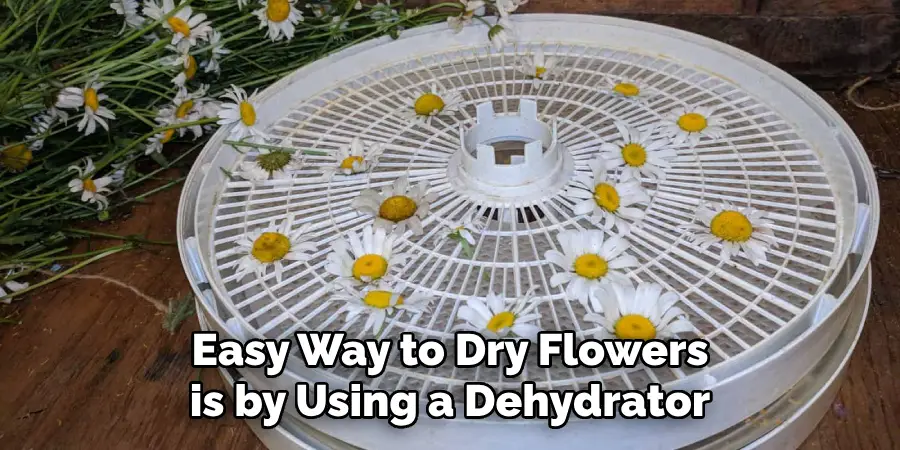
3. Using Silica Gel:
Silica gel is a desiccant that helps to absorb moisture from the flowers and dry them quickly. You can purchase silica gel at most craft stores or online. Take an airtight container, fill it with silica gel, and place your flowers on top of the gel. Then gently pour more silica over the flowers until they are completely covered. Seal the container and wait for a few days until the flowers are dried.
4. Pressing Flowers:
Pressing flowers is another easy and traditional method of drying them for potpourri. Place your flower between two sheets of paper, then put it in a heavy book and place some weight on top of it. Leave it undisturbed for about two weeks, or until the flowers are completely dry. This method works best for flat or single-layer flowers such as pansies, daisies, and violets.
5. Microwave Drying:
Microwave drying is a quick and effective way to dry delicate flowers like roses or lilies. Place your flowers in between two paper towels and microwave them on a low setting for about 30 seconds. Check the flowers and repeat the process until they are completely dry. You can also use a microwave flower press for this method.
6. Using a Flower Press:
A flower press is a device designed specifically for drying flowers quickly and evenly. It involves placing your flowers between layers of absorbent paper and tightening the screws to press them flat. You can create beautiful, pressed flowers with this method that will look great in potpourri or any other craft project.
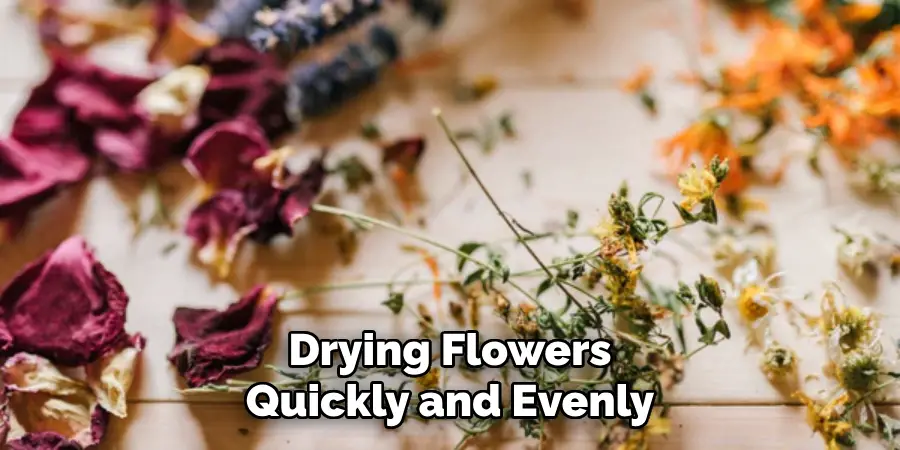
7. Oven Drying:
Oven drying is a method that works well for flowers with sturdy petals, such as baby’s breath or hydrangeas. Preheat your oven to the lowest setting and place the flowers on a baking sheet lined with parchment paper. Then put them in the oven with the door slightly open to let moisture escape. Leave them inside for about an hour or until they are completely dry.
8. Using a Flower Drying Rack:
A flower drying rack is another device that can help you dry flowers quickly and evenly. Simply place your cut flowers on the rack in a single layer, then hang them upside down in a warm and dark place. This method works best for large and heavy-headed flowers like sunflowers or peonies. This method can take up to two weeks for the flowers to dry completely.
9. Glycerin Method:
The glycerin method is a popular way to preserve flowers and retain their color and shape. You can purchase glycerin at most craft stores or online. Mix one part glycerin with two parts warm water in a container, then place your flowers in the mixture for about a week. After that, remove them, dry them off, and they will be ready for potpourri-making.
Following these methods, you can not only dry flowers but also preserve their natural beauty and fragrance. Be sure to experiment with different types of flowers and techniques to find the best way that works for you. With a little patience and creativity, you can create your own unique potpourri blend that will bring joy and relaxation into your home. Happy drying!
Additional Tips and Tricks to Dry Flowers for Potpourri
1. If you’re using fresh flowers, make sure to remove any excess foliage and damaged petals before you start the drying process. This will ensure that your potpourri has a clean and polished look.
2. Experiment with different types of flowers and herbs to create unique scents for your potpourri. For example, lavender and rose petals are classic choices, but you can also try adding in some chamomile or eucalyptus for a refreshing twist.
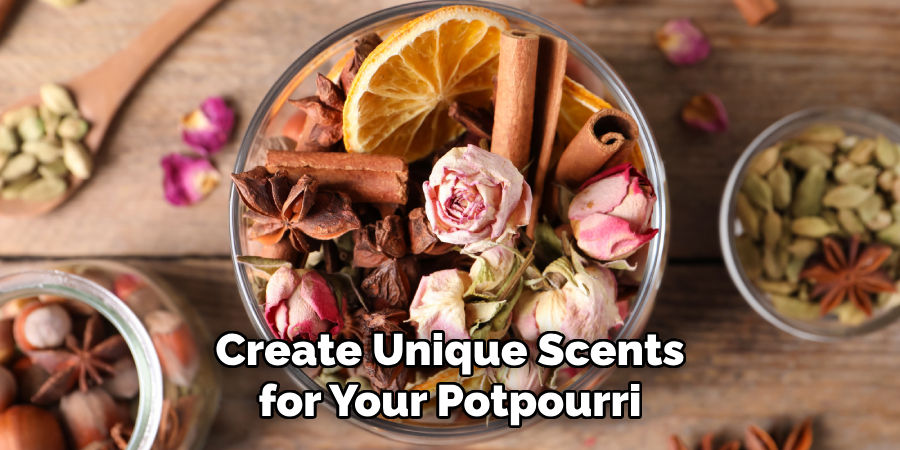
3. If you don’t have access to fresh flowers, you can also use dried flowers that are sold in craft stores. These are usually already preserved and ready to be used for potpourri.
4. To enhance the fragrance of your potpourri, consider adding essential oils in complementary scents. Just a few drops of oil can go a long way in making your potpourri smell amazing.
5. Don’t limit yourself to just flowers – dried fruits, spices, and even pine cones can add interesting textures and aromas to your potpourri mix.
6. For an extra burst of fragrance, try placing small sachets filled with potpourri in different areas of your home, like closets or drawers. This will keep your clothes and linens smelling fresh all year round.
7. To add a personal touch, you can also mix some dried herbs from your own garden into your potpourri mix. Not only will this add a unique scent, but it will also bring back memories of your beautiful garden every time you use the potpourri.
8. If you’re planning to give your potpourri as a gift, consider packaging it in pretty jars or sachets and adding a label with the name of the blend and its ingredients. This will make it look even more special and thoughtful.
9. Don’t be afraid to get creative with your potpourri mix – you can add in dried flowers that are not traditionally used for potpourri, like daisies or carnations. Just make sure to research their drying process beforehand.
Following these tips and tricks will not only help you create beautiful and fragrant potpourri but will also allow you to personalize your blends and experiment with different scents.
Have fun and let your creativity run wild! So next time you see some flowers starting to wilt, don’t throw them away – instead, turn them into a wonderful potpourri blend that will fill your home with a delightful aroma. Happy drying!
Frequently Asked Questions
How Long Does It Take to Dry Flowers for Potpourri?
It usually takes about 2-3 weeks for the flowers to fully dry out, depending on the type of flowers being used and the humidity in your area. Some flowers, like roses and lavender, dry quicker than others. It is important to check on the flowers periodically to ensure they are fully dried before using them in potpourri.
What Types of Flowers Can Be Used for Potpourri?
There are many types of flowers that can be used for potpourri, depending on personal preference and availability. Popular choices include roses, lavender, chamomile, jasmine, and various types of herbs such as rosemary and thyme. It is important to choose flowers that are known for retaining their scent even after drying.
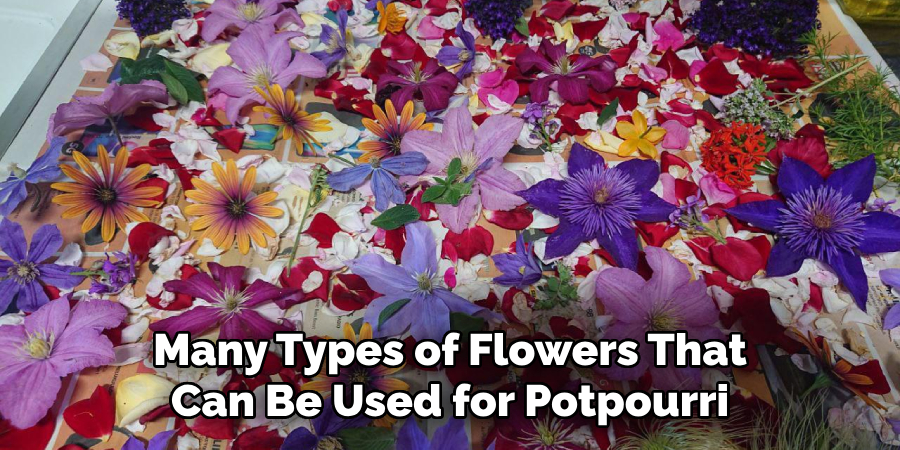
Can I Use Store-Bought Flowers or Do They Need to Be Fresh?
You can use either store-bought or fresh flowers for potpourri. However, it is important to make sure that the flowers are in good condition and have not already started to wilt or lose their scent. Using flowers that are past their prime will result in a less fragrant potpourri.
What Is the Best Way to Dry Flowers for Potpourri?
One of the most popular methods for drying flowers for potpourri is air drying. To do this, gather the chosen flowers in small bunches and hang them upside down in a cool, dark place with good air circulation. Alternatively, you can also use a dehydrator or oven on low heat to speed up the drying process.
Conclusion
All in all, knowing how to dry flowers for potpourri is a useful skill that allows you to create beautiful and fragrant homemade decorations. By following the steps outlined in this guide, you can easily dry your favorite flowers and create unique blends of potpourri that will fill your home with delightful scents.
Experiment with different types of flowers and herbs to find the perfect combination for your personal taste. Enjoy the process and have fun creating your own homemade potpourri! So, don’t hesitate to try it out and add some natural beauty to your home. Happy drying!

